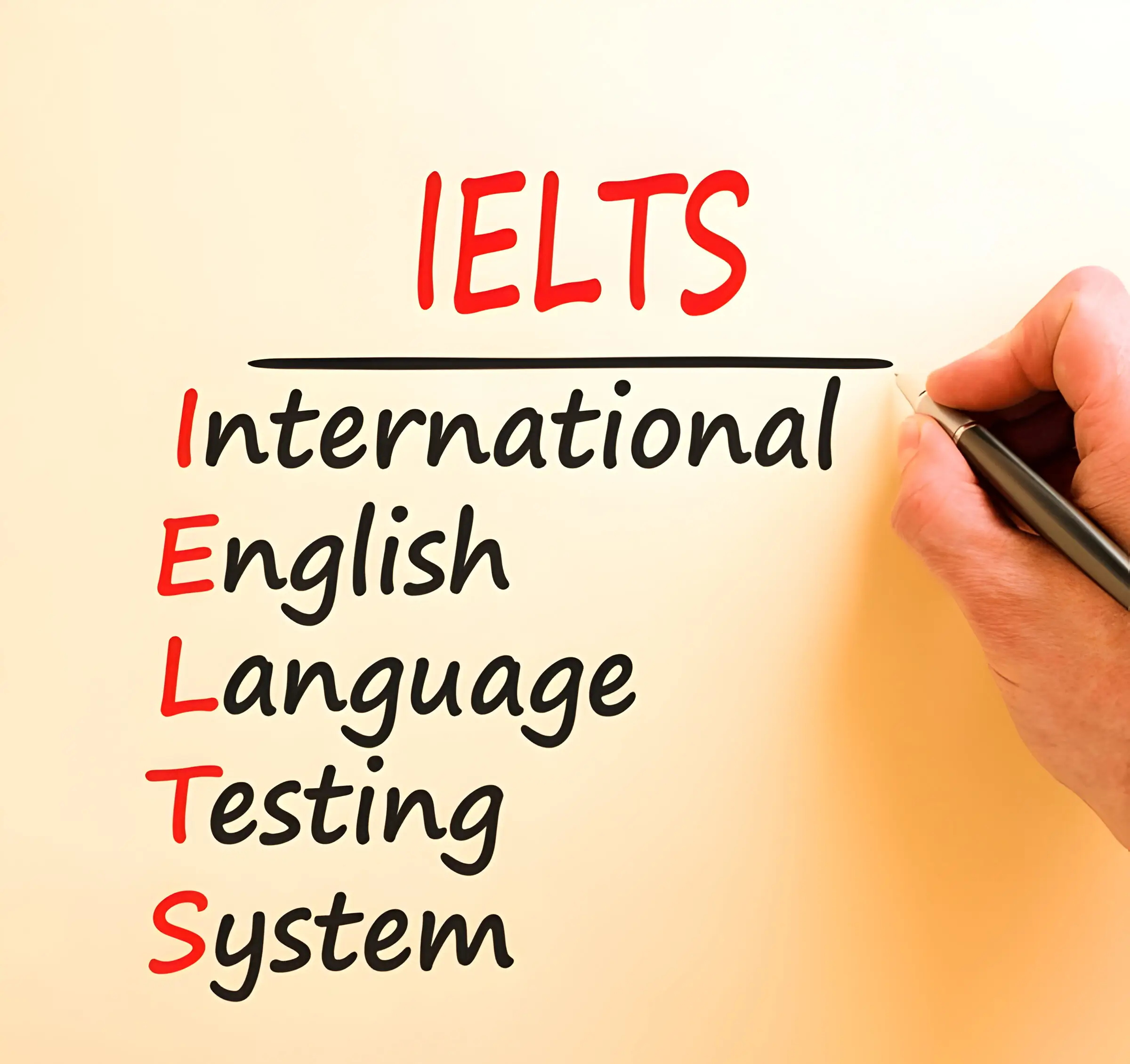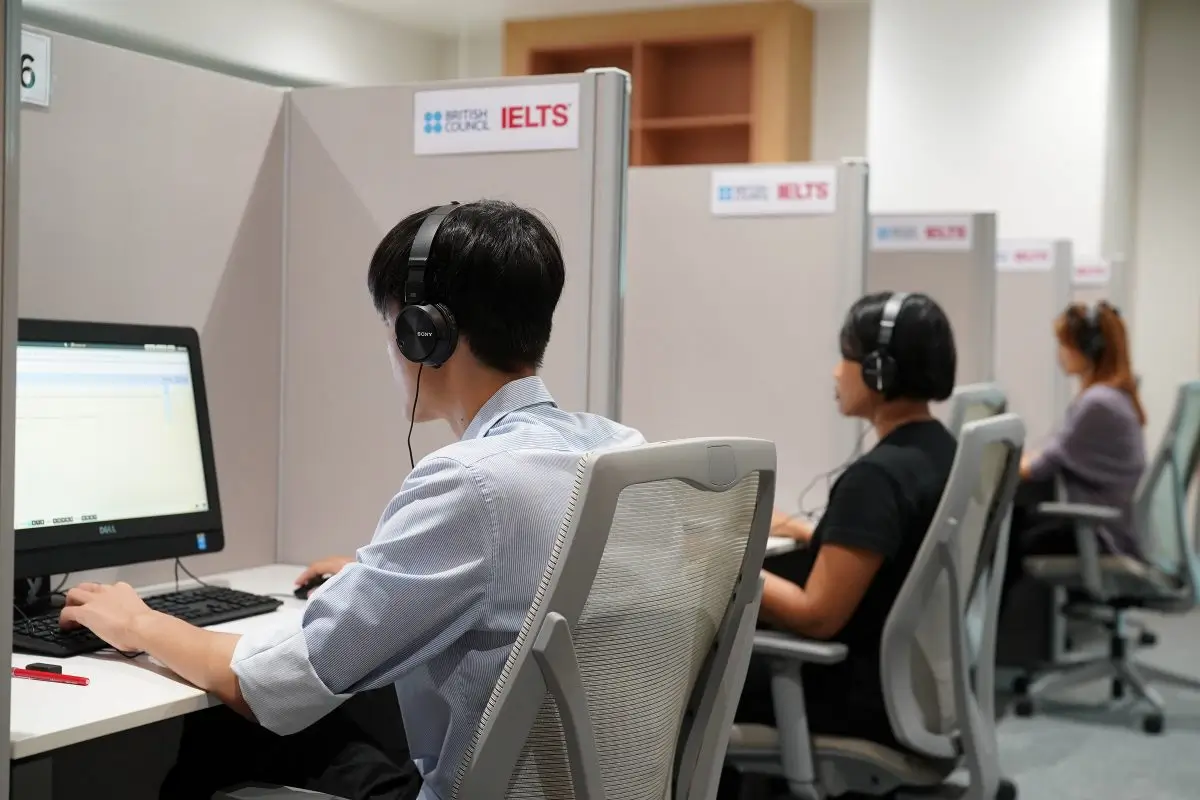IELTS
The IELTS test is a globally recognized English language proficiency test for those whose first language is not English. It is used in Higher education, migration, and employment. One can take IELTS test for two reasons:
1. Academic Purpose: This test is for applicants pursuing a degree program in a college or university with English as the language of instruction. Most of colleges and universities globally accept IELTS Academic Test Scores for showcasing english language proficiency of the applicant.
2. General Purpose: This is for people who wish to gain work experience, undertake training, or migrate to an English-speaking country.
Structure of the Test:
The test includes four modules in its status:
Part 1- Listening: 30 minutes and 10 minutes are allowed to transfer the answers.
Part 2- Reading: 60 minutes
Part 3- Writing: 60 minutes
Part 4- Speaking: 10 to 15 mins
Scoring:
The IELTS test result is reported on a 9-band scale with four components, from the lowest score of zero to the highest score of nine.
The mean of all four scores is called the overall band score.
Types of IELTS:
- IELTS Academic: This is for students who wish to enroll in higher education or require a professional license.
- IELTS General Training: This is for students who want to do secondary studies, have work experience, or are immigrants.

IELTS on Paper vs. Computer – Which One Suits You Best?


| IELTS on Paper | IELTS on Computer | |
| Test Format: | Candidates use only paper and pencil in these sections, which focus on listening, reading, and writing. Answer sheets are provided where they fill in their responses. The candidates speak face-to-face to the IELTS examiner in the speaking module. | Computer terminals are available at the IELTS testing centers, the listening, reading, and writing sections are done on computers. The candidates type on a computer in the answer sections in which they type the answer. (answer types may vary: tick, fill, drag, or select) Face-to-face speaking tests with the examiner are still in practice, just as paper-based tests are. |
| Test Duration: | The total time for the IELTS test may take about 2 hours and 45 minutes. Listening: 30 min (Plus 10 mins transfer time). Reading: 60 mins. Writing: 60 mins Speaking: 11-14 minutes. It may be done on the same day or scheduled within seven days before or after other sections. | The total duration of the testing is the same as the paper-based version i.e. 2 hours and 45 minutes. Listening: 30 minutes. Of these, 30 minutes are provided with a review opportunity with no additional transfer time. Reading: 60 minutes. Writing: 60 minutes. Speaking: 11-14 minutes. It may be done with the other tests on same day or seven days before or after. |
| Availability: | Most test centers worldwide have IELTS on paper – fixed on set days. You have to choose from the days available in the set days list. | More computer-based tests are organized than the paper test, sometimes even several times in one day, depending on the test center. You can book your test on any day of the week. |
| Answering Method: | Answers are written manually by writing with pencil on a paper. | Answers are typed on the computer in the provided answer spaces. |
| Listening Section: | 10 minutes time is given to transfer the final answers in the provided answer sheet. | You are given 2 minutes to review your answer before submitting them. |
| Results: | Results usually are published about 13 days after the test is done. | It takes 3-5 days once the full test is completed to receive the results. |
Choosing Between Paper and Computer
Comfort Level:
If you are more comfortable typing and moving around the computer, then the computer-based test is better for you than the paper-based test. A paper-based test could be more appropriate if you are proficient in expressing your answers in paper.
Test Date Availability:
If you need a result for a cause or have a certain time when the results are needed, then considering a computer test might be better, as one has more options regarding the date to take the tests.
Speed of Results:
When you wish to have your results as fast as possible, the computer-based test gives you better options.
Even different institutions, employers, or immigration authorities do not discriminate against the other formats; hence, the choice depends on the candidate’s preference, considering an IELTS on paper or an IELTS on a computer.
Why take the IELTS?
Study abroad: Those who wish to study in English-speaking countries must possess an IELTS test, as it forms part of most Colleges and Universities’ admission requirements.
Work: For those seeking employment, particularly in English-speaking nations, employers have required that candidates possess an IELTS test for proficiency certificates.
Immigration: In some countries, notably the United Kingdom, Australia, Canada, New Zealand, etc, an IELTS score is one of the requirements sought during immigration.
Ensuring one passes the Examination for Foreign Language Speakers is regarded as one of the most critical tests for individuals planning to study, work, or live in a country with an English Language.


Global Recognition:
IELTS is accepted by more than 10000 institutions, including universities, employers, immigration agencies, and professional organizations.
Test availability:
The test is available in more than 140 countries around the globe, and there are more than 1,600 test centers worldwide.
Test format:
The Listening, Reading, and Writing sections are done in one sitting back-to-back with no intervals.
There is some room for flexibility here. The Speaking section may be taken on the same day, at least less than a week prior, or after other testing activities have been undertaken.
Validity:
A typical IELTS certificate is valid for two years, during which time it can be used to apply for study, seek a job, etc.
